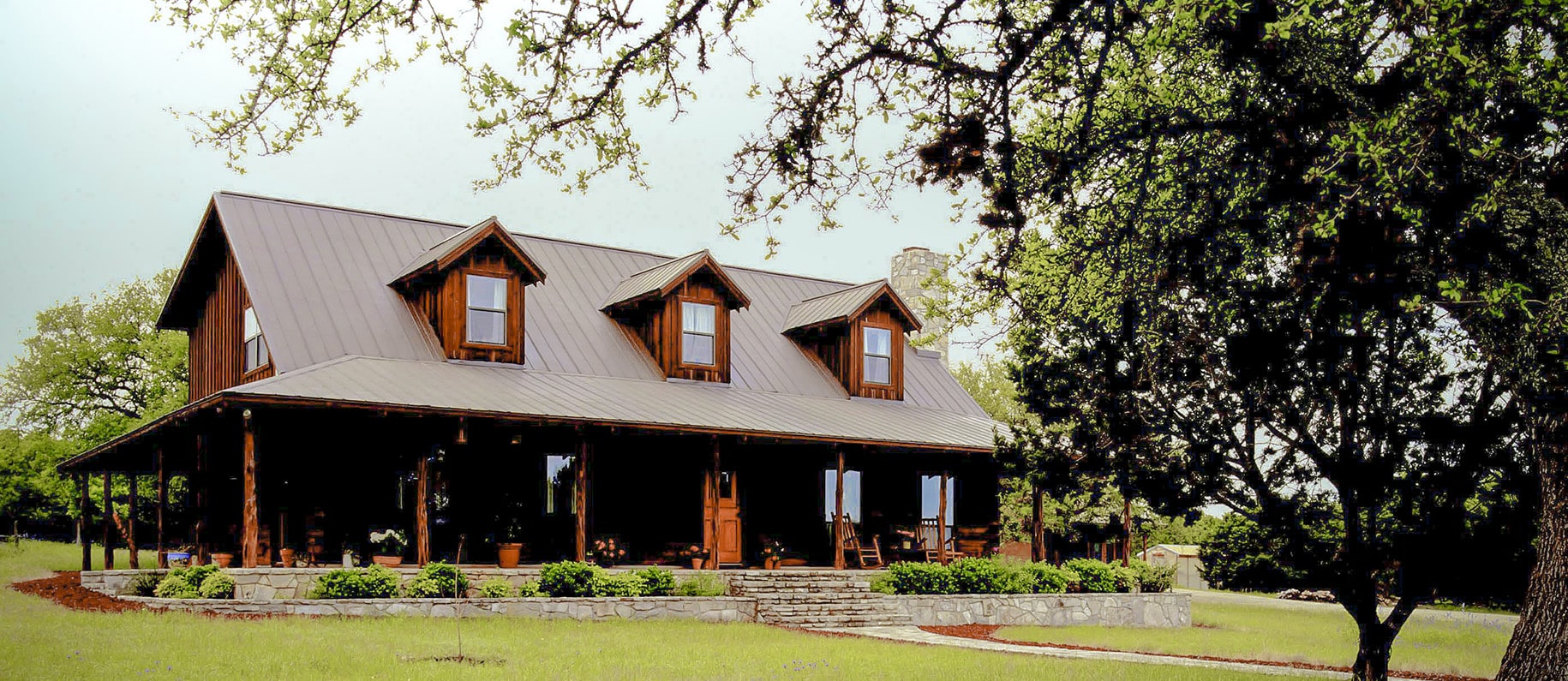A home in the country, far away from traffic jams, noisy neighbors and crime, is the dream of more than a few city folks. But buying and financing a country dream home is not the same as buying a home in the city. Before making that move, take time to research the differences.
Today’s buyers
As recently as 25 years ago, the majority of new rural homes were built by full-time farm and ranch families who lived and worked on the same land. But nowadays, the typical customer may have little or no farming experience, and sometimes not even a rural background.
“In today’s rural housing market, there are two major driving factors – interest rates and technology:’ says Victoria Greer, president of residential lending for Capital Farm Credit, headquartered in Bryan. “Mortgage interest rates are at an all-time low. At one time, individuals may have considered country living beyond their financial reach. With lower payments available now, they can afford more home and space:’ Moreover, technological advances have made it possible for more employees to work from home. Country living, with the benefits of a small-town environment and schools, is more desirable when you don’t have to face a long daily commute, Greer points out.
Water systems, easements and other factors
Because many country-home buyers have not grown up in rural areas, they are not always aware of the nuances of buying property in the country. Unlike urban residential developments, rural acreage sometimes may have limited access to community water systems. Sometimes amenities like high-speed Internet or cable service are less reliable, or more costly to acquire. Moreover, in Texas, homestead laws are different for rural properties than for urban properties. An experienced rural lender can help explain the differences.
In today’s rural housing market, there are two major driving factors – interest rates and technology
“With a house in town, buyers are used to being on water and sewer systems, and in areas with restrictions:’ says Greer. “But outside the city limits, owners should be aware of needed infrastructure costs like water wells, sewer systems and electrical connections.”
Justin Wiethorn, regional president in Texas Land Bank’s Waco headquarters, echoes Greer’s advice. “Do your homework;’ he says. “Water and sewer systems are not a given in the country:’
Similarly, he advises first-time rural home owners to do their research on easements and flood plains. “Not all parcels of land include road access, and in some cases you might have to drive across property owned by someone else;’ Wiethorn says. “Make sure easements are thoroughly described and filed on public record to maintain your access.”
To determine if the homesite you are considering purchasing is located in a flood plain, check the flood plain map overlay tool for properties listed on Lands of America, and contact the county engineer or surveyor for verification. Flood insurance can be costly and can impact the overall value of the property.
Once your home is built, Wiethorn suggests hiring a local home inspector. “Work with inspectors who have experience in rural properties to ensure that nothing of importance is overlooked,” he says.
Maintaining ag exemptions
Most likely, the property will have an existing ag-use tax exemption, which significantly lowers the owner’s tax bill. First-time country-home buyers often are not familiar with the requirements for maintaining an ag exemption, and commercial lenders sometimes require the buyer to rescind the exemption before making a rural-home loan. However, specialized rural lenders, such as Farm Credit cooperatives, recognize the value that comes with an ag exemption.
“As soon as we finish at the closing table, we encourage our customers to go directly to the Appraisal District office and find out what they need to do to keep that exemption in place;’ says Jolene Curtis, vice president of operations for Texas AgFinance, a rural lender serving south and central Texas.
Check on insurance
Farm Credit lenders say another common surprise for country home customers is the difficulty of securing homeowner’s insurance.
“Customers naturally assume that their current insurance carrier will automatically pick up coverage on their new home, but that is not always the case;’ says Curtis, noting that many insurance companies won’t underwrite policies outside the city limits. “Farm Credit has been doing these loans for so long, we can help customers find insurers who do write rural policies:’
Financing options abound
Today’s country-home buyers have a dizzying array of financing options, thanks to the secondary market’s entrance into rural home lending.
“The secondary market has totally changed in the last few years, narrowing the options for rural home loans;’ Curtis says. “Fortunately, Farm Credit has stood the test of time, and we are still the lender of choice for rural homeowners, with flexible, cost-effective financing options:’ Today, Farm Credit lenders offer:
- Variable-Rate Loans: Customers wanting to take advantage of low interest-rate markets can choose variable-rate mortgage loans, with Prime- or LIBOR-based floating rates for up to 15 years. These loans are ideal for moderately priced homes in rural areas with populations of less than 2,500. Because these loans are kept in Farm Credit’s in-house portfolio, customers receive the benefits of their cooperative ownership of the lending institution. These benefits often include patronage payments, which effectively reduce the borrower’s interest rate.
- Fixed-Rate Loans: Fixed-rate loans continue to be the most popular with home buyers. On acreage property, most mortgage companies can only finance up to 10 acres. However, Farm Credit lenders can finance the acreage and the home in one loan, which saves the customer closing costs and means they only have to make one payment.
Farm Credit associations can lend up to 95 percent of appraised value on 30-year fixed-rate loans, which are then sold to secondary market lenders like Fannie Mae and Farmer Mac. There are no loan minimums and no restrictions on locations within city limits.
- Construction Loans: One-time closing options enable borrowers to close on the permanent loan at the same time the construction loan is closed. Once the home is complete, the customer can opt to reprice the loan to take advantage of declining rates, or refinance it into a fixed-rate loan.
- Repricing: Farm Credit offers unique repricing services not typically found elsewhere. If market conditions are favorable, for a fee a customer may reprice a loan to receive a lower rate and lower payment.
“To reduce payments on a commercial lender’s loan, they usually would have to pay for completely refinancing the loan. Repricing is a huge financial benefit for our customers;’ says Greer.
The difference: Knowledgeable service
In today’s highly competitive mortgage-lending market, all lenders offer fairly similar products. That means the key to competitive advantage becomes the lender’s knowledge and service. “When deciding on a lender, what it really comes down to is who you trust to know what they’re doing,” says Curtis. “We’ve been doing this since 1917 and we know how to make home loans outside the city limits better than anyone. Underwriters in New Jersey or L.A. aren’t used to seeing those properties; we are. Actually, most of us own one, ourselves.”
This article was originally published in Lands of Texas Magazine, a Lands of America print publication. Subscribe here today!



